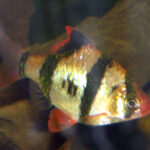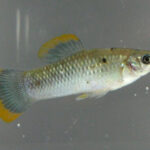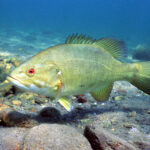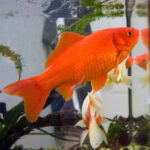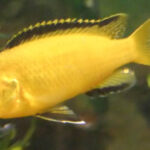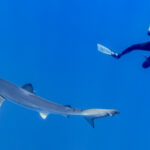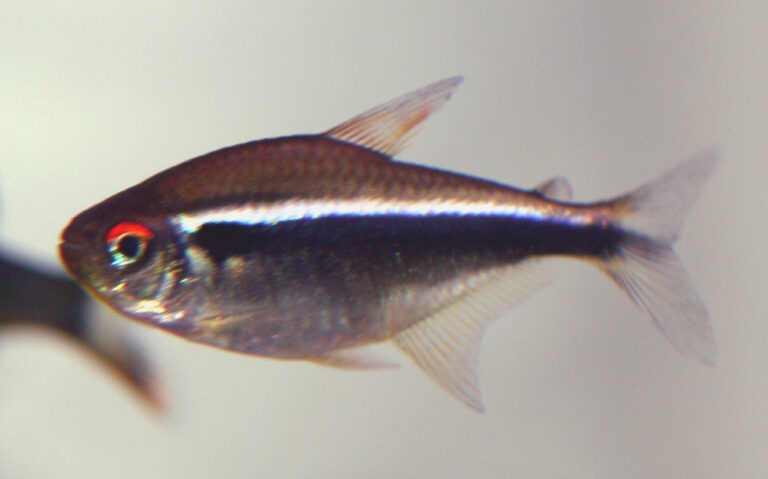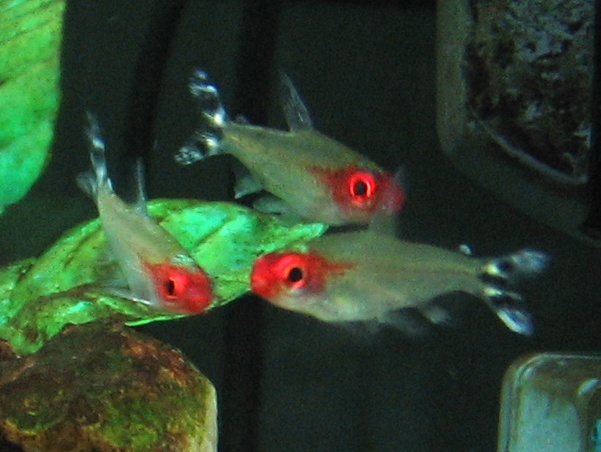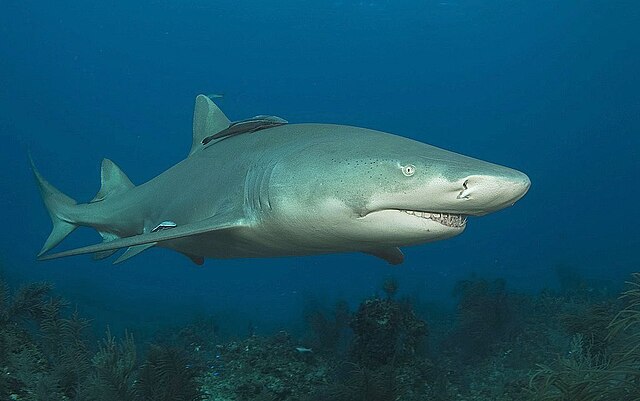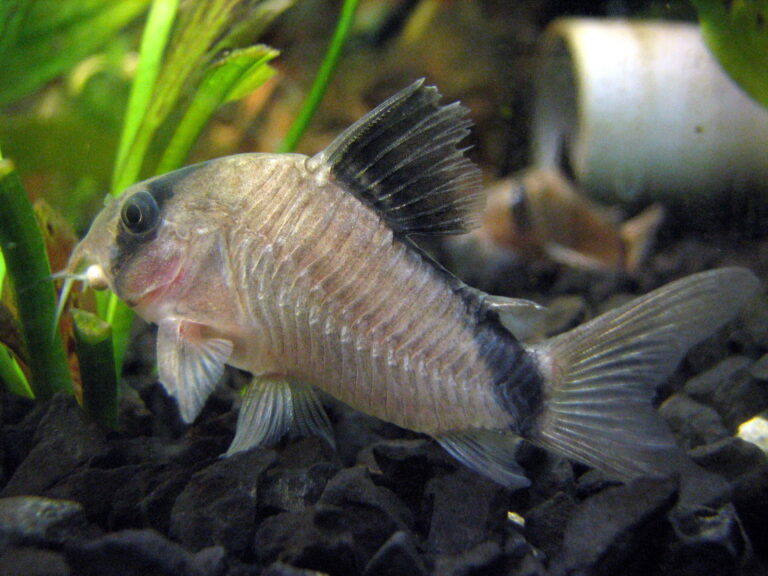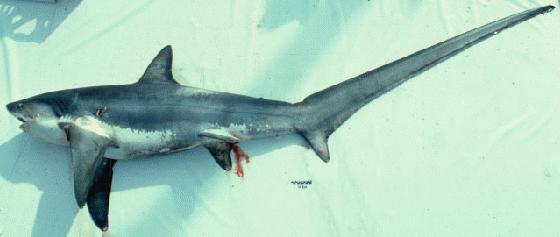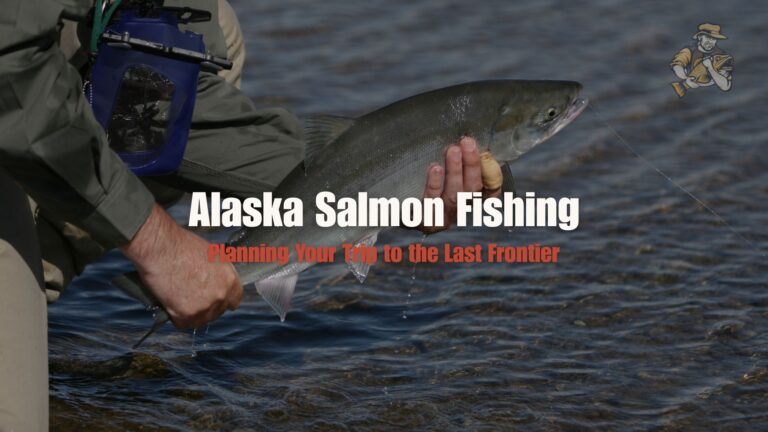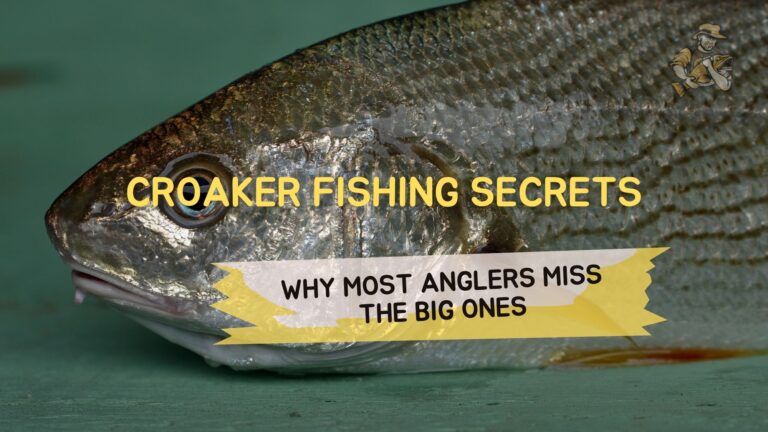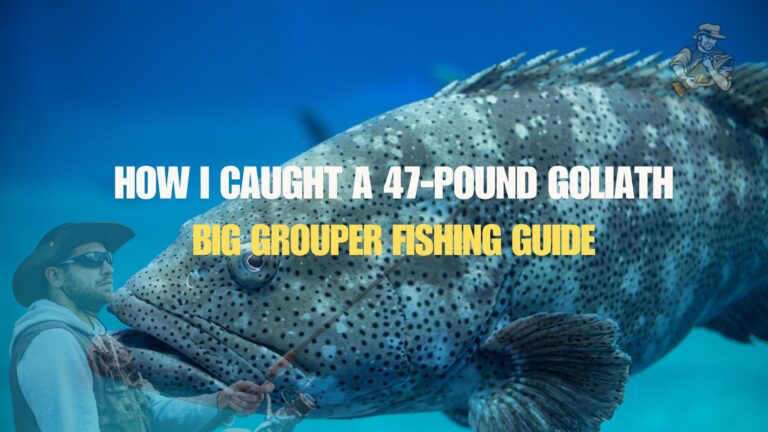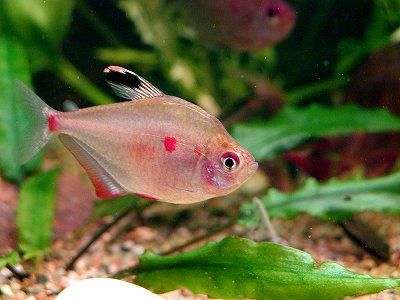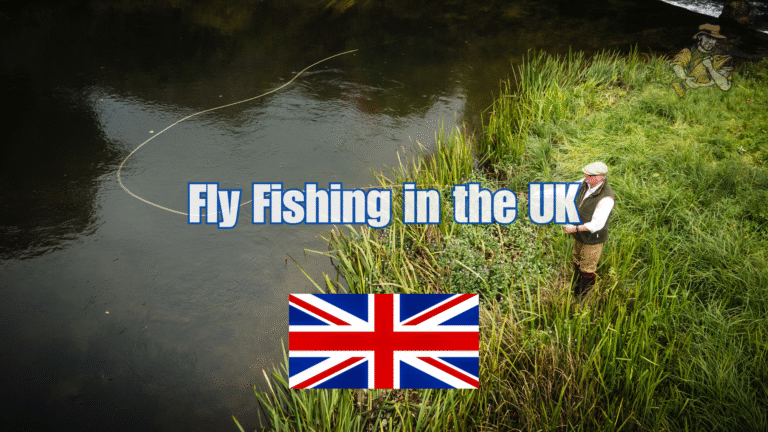Largemouth Bass
By Ryan Maron | Last Modified: July 7, 2025
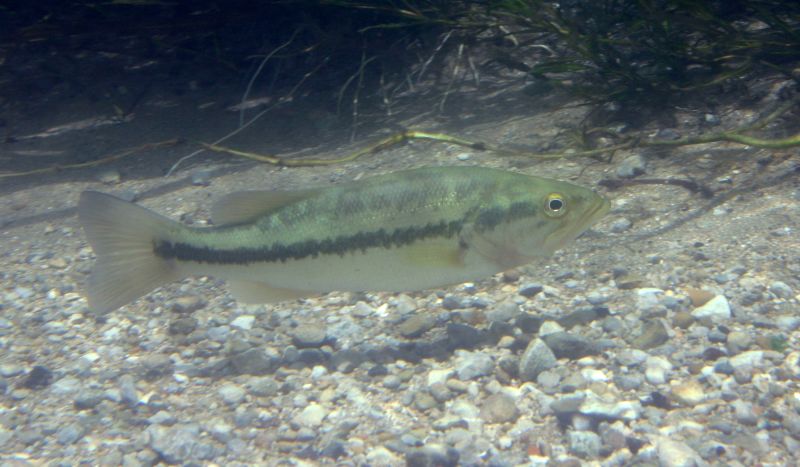
The Largemouth Bass, scientifically known as *Micropterus salmoides*, stands as one of North America’s most iconic freshwater gamefish and a cornerstone species in countless aquatic ecosystems. This apex predator commands respect from both recreational anglers and marine biologists due to its remarkable adaptability, aggressive feeding behavior, and significant ecological influence. As a member of the black bass family, the Largemouth Bass serves as a keystone species in many freshwater environments, regulating prey populations and maintaining ecological balance through its position atop the aquatic food web.
The species’ widespread distribution across North American waterways, combined with successful introductions worldwide, has established the Largemouth Bass as both an economically valuable sportfish and an ecologically important predator. Its presence shapes entire aquatic communities, influencing everything from zooplankton dynamics to vegetation patterns in shallow water zones. Understanding this species proves crucial for effective fisheries management, conservation efforts, and maintaining healthy freshwater ecosystems.
| Feature | Details |
|---|---|
| Common Name | Largemouth Bass |
| Scientific Name | Micropterus salmoides |
| Family | Centrarchidae |
| Typical Size | 30-60 cm (12-24 in), 1-5 kg (2-11 lbs) |
| Habitat | Shallow, vegetated freshwater areas |
| Diet | Piscivorous opportunist |
| Distribution | North America, introduced globally |
| Conservation Status | Least Concern |
Taxonomy & Classification
The Largemouth Bass belongs to the family Centrarchidae, commonly known as the sunfish family, which encompasses numerous North American freshwater species. Within this diverse family, *Micropterus salmoides* represents the largest and most widespread member of the black bass genus *Micropterus*. The species was first scientifically described by French naturalist Bernard Germain de Lacépède in 1802, establishing its taxonomic foundation.
Genetic studies have revealed two distinct subspecies of Largemouth Bass. The Northern Largemouth Bass (*M. s. salmoides*) occupies cooler northern waters and exhibits slightly different morphological characteristics compared to the Florida Largemouth Bass (*M. s. floridanus*), which thrives in warmer southern climates. These subspecies demonstrate varying growth rates, temperature tolerances, and behavioral patterns that reflect their evolutionary adaptation to specific environmental conditions.
The taxonomic classification places Largemouth Bass within the order Perciformes, the largest order of vertebrates, which includes approximately 40% of all fish species. This classification reflects the species’ evolutionary relationship to other spiny-rayed fishes and helps explain many of its anatomical features and ecological behaviors.
Physical Description
Largemouth Bass exhibit distinctive morphological features that distinguish them from other black bass species and contribute to their predatory success. The species’ most recognizable characteristic is its exceptionally large mouth, which extends beyond the posterior margin of the eye when closed. This oversized oral cavity enables the bass to consume prey items up to one-third of their own body length, a remarkable feeding adaptation among freshwater fish.
The body structure of Largemouth Bass reflects their ambush predation strategy. Their laterally compressed, fusiform body shape provides excellent maneuverability in dense vegetation while maintaining the ability to generate explosive bursts of speed. Adult specimens typically measure between 30-60 centimeters in length, with trophy individuals occasionally exceeding 75 centimeters. Weight ranges from 1-5 kilograms for average adults, though exceptional specimens have been documented reaching over 10 kilograms.
Coloration patterns in Largemouth Bass serve both camouflage and communication purposes. The dorsal surface displays dark green to nearly black pigmentation, gradually transitioning to lighter green flanks marked by a distinctive lateral line. The ventral region appears white to pale yellow, creating countershading that helps conceal the fish from both prey and predators. A prominent dark lateral stripe extends from the gill cover to the caudal peduncle, though this marking may fade or intensify based on environmental conditions and emotional state.
The species possesses two dorsal fins, with the anterior fin containing 9-11 sharp spines and the posterior fin featuring 12-15 soft rays. This fin configuration provides both defensive capabilities and precise maneuvering control during feeding and territorial behaviors. The caudal fin exhibits a slightly forked shape, optimized for quick acceleration rather than sustained swimming speeds.
Habitat & Distribution
Largemouth Bass demonstrate remarkable habitat flexibility, occupying diverse freshwater environments throughout their extensive range. The species naturally occurs across eastern North America, from southern Canada through the Great Lakes region and extending south to northern Mexico. Their native range encompasses major river systems including the Mississippi, Colorado, and Rio Grande basins, as well as countless lakes, ponds, and tributary streams.
Successful introduction programs have established Largemouth Bass populations worldwide, including Europe, Asia, Africa, and South America. These introductions, primarily driven by recreational fishing interests, have created both ecological opportunities and challenges in non-native environments. The species’ adaptability has enabled colonization of diverse aquatic systems, from tropical reservoirs to temperate mountain lakes.
Preferred habitat characteristics include shallow, vegetated areas with abundant cover structure. Largemouth Bass gravitate toward zones with submerged vegetation, fallen timber, rocky outcroppings, and artificial structures that provide ambush opportunities and protection from larger predators. Water depth preferences typically range from 1-6 meters, though individuals may venture into deeper waters during thermal stratification periods or when following prey movements.
Temperature requirements significantly influence habitat selection and seasonal movements. Optimal water temperatures range between 20-25°C, with the species demonstrating reduced activity below 10°C and stress responses above 30°C. During winter months in northern regions, Largemouth Bass seek deeper, thermally stable waters where they enter a state of reduced metabolic activity. Spawning activities require specific temperature thresholds, typically occurring when water temperatures reach 15-20°C.
Water quality parameters also influence habitat suitability. Largemouth Bass tolerate a wide pH range from 6.0-8.5 but prefer slightly alkaline conditions. Dissolved oxygen levels must exceed 3-4 mg/L for long-term survival, though the species can tolerate brief periods of lower oxygen concentrations. Turbidity levels affect feeding efficiency, with moderate clarity providing optimal conditions for visual predation while maintaining sufficient cover for ambush tactics.
Diet & Feeding Behavior
As apex predators in many freshwater ecosystems, Largemouth Bass exhibit opportunistic feeding behavior that adapts to seasonal prey availability and environmental conditions. Their diet composition changes dramatically throughout their life cycle, reflecting both physiological constraints and ecological opportunities. Juvenile bass initially consume zooplankton, aquatic insects, and small crustaceans before gradually transitioning to larger prey items as their gape size increases.
Adult Largemouth Bass demonstrate highly piscivorous tendencies, with fish comprising 70-90% of their diet in most environments. Primary prey species include bluegill, shad, minnows, yellow perch, and smaller bass. The species’ exceptional mouth size enables consumption of remarkably large prey items, with successful predation documented on fish approaching 30-40% of the predator’s own length. This capability provides significant energetic advantages, allowing individual bass to meet caloric requirements through fewer, larger meals.
Feeding strategies vary considerably based on habitat structure and prey density. In vegetated environments, Largemouth Bass employ classic ambush tactics, remaining motionless among aquatic plants before launching explosive strikes at passing prey. Open water situations may trigger more active hunting behaviors, including coordinated herding of schooling baitfish. The species demonstrates remarkable learning ability, quickly adapting feeding techniques to exploit emerging prey opportunities.
Seasonal feeding patterns reflect both prey availability and metabolic requirements. Spring and early summer periods coincide with peak feeding activity as bass recover from winter dormancy and prepare for spawning activities. During these periods, bass fishing techniques prove most effective due to aggressive feeding behavior. Summer feeding often shifts to crepuscular periods when water temperatures moderate and prey species become more active.
Prey selection demonstrates size-selective preferences that maximize energetic efficiency. Largemouth Bass consistently target prey items that provide optimal energy return relative to capture effort. This selective pressure influences entire prey fish communities, often resulting in evolutionary adaptations among potential prey species. The species’ feeding behavior also responds to environmental factors such as water clarity, temperature, and dissolved oxygen levels, which affect both predator and prey activity patterns.
Behavior & Adaptations
Largemouth Bass exhibit complex behavioral patterns that reflect their evolutionary success as freshwater predators. Territorial behavior intensifies during spawning seasons when mature males establish and defend nesting sites. These territorial displays include aggressive posturing, fin displays, and direct physical confrontations with intruding individuals. Territory size varies based on habitat quality and population density, typically ranging from 10-50 square meters in prime spawning areas.
Social organization remains relatively fluid outside breeding seasons, with individuals demonstrating loosely structured hierarchies based on size and aggression levels. Larger bass generally dominate preferred feeding locations and shelter sites, forcing smaller individuals into marginal habitats. This size-based dominance system influences growth rates and survival probabilities throughout the population.
Sensory adaptations contribute significantly to the species’ predatory effectiveness. Largemouth Bass possess highly developed lateral line systems that detect minute water movements and pressure changes generated by nearby prey or predators. This mechanoreceptive capability proves especially valuable in turbid water conditions where visual hunting becomes less effective. The species also demonstrates excellent low-light vision, enabling effective feeding during dawn and dusk periods when many prey species are most active.
Behavioral thermoregulation plays a crucial role in daily activity patterns. Bass actively seek optimal temperature zones through vertical and horizontal movements, often following thermal gradients to maintain preferred body temperatures. During summer stratification, individuals may move between shallow feeding areas and deeper, cooler retreat zones multiple times daily.
Learning and memory capabilities in Largemouth Bass exceed those of many fish species. Individuals demonstrate the ability to recognize and avoid fishing lures they have previously encountered, adapt feeding strategies to local prey types, and remember productive feeding locations across seasonal cycles. This cognitive flexibility contributes to their success in diverse environments and explains their reputation as challenging quarry among recreational anglers.
Seasonal migration patterns, while not as extensive as those seen in anadromous species, reflect adaptive responses to changing environmental conditions. Spring movements typically involve transitions from deeper winter habitats to shallow spawning areas. Post-spawn periods may trigger movements to optimal feeding zones, while autumn migrations often return individuals to thermally stable overwintering sites.
Reproduction & Life Cycle
The reproductive cycle of Largemouth Bass demonstrates remarkable complexity and parental investment strategies rarely observed among freshwater fish species. Spawning activities commence when water temperatures reach approximately 15-20°C, typically occurring between March and June depending on latitude and local climate conditions. Males initiate the breeding process by constructing circular nests in shallow, protected areas with firm substrates such as sand, gravel, or clay.
Nest construction involves meticulous clearing of debris and sediment using powerful tail sweeps and mouth movements. Males create depressions measuring 0.5-1.5 meters in diameter and 10-20 centimeters deep, strategically positioned near protective cover such as fallen logs, rock formations, or vegetation edges. The quality and location of these nests directly influence reproductive success and offspring survival rates.
Courtship behaviors include elaborate displays designed to attract females and demonstrate male fitness. Males develop enhanced coloration during breeding periods, with darker pigmentation and more pronounced lateral markings. Spawning acts involve multiple females visiting individual male territories, with each female depositing 2,000-40,000 eggs depending on her size and condition. Larger females contribute disproportionately to reproductive output, with trophy-sized individuals potentially producing over 100,000 eggs annually.
Parental care responsibilities fall exclusively to males, who guard nests aggressively against predators and competitors for 3-4 weeks following fertilization. Males fan eggs continuously to ensure adequate oxygenation and remove fungal infections or dead embryos that could compromise brood survival. This intensive parental investment significantly increases offspring survival rates compared to species that provide no post-spawning care.
Larval development progresses through distinct stages over 10-14 days, depending on water temperature. Newly hatched fry remain attached to the nest substrate through yolk sac absorption, during which males continue protective behaviors. Free-swimming fry form dense schools that remain under male supervision for an additional 1-2 weeks before dispersing to shallow nursery areas.
Growth rates vary considerably based on environmental conditions and prey availability. Young bass experience rapid growth during their first year, potentially reaching 10-15 centimeters by winter. Sexual maturity typically occurs between ages 2-4, with females generally maturing later than males. Maximum lifespans in wild populations rarely exceed 15-20 years, though individuals in optimal environments may survive longer.
Predators & Threats
Despite their status as apex predators in many freshwater systems, Largemouth Bass face predation pressure throughout their life cycle. Juvenile bass experience the highest predation rates, with numerous aquatic and terrestrial predators targeting vulnerable age classes. Largemouth Bass adults, larger sunfish species, northern pike, muskellunge, and various catfish species pose significant threats to young bass populations.
Avian predators play substantial roles in bass mortality, particularly for individuals occupying shallow water habitats. Great blue herons, cormorants, ospreys, and bald eagles regularly prey upon bass ranging from juveniles to adult specimens. Wading birds demonstrate particular effectiveness in vegetated shallow areas where bass seek cover and feeding opportunities.
Mammalian predators contribute to bass mortality through both direct predation and nest disturbance. Raccoons, otters, and mink actively hunt bass in shallow waters and may destroy spawning nests during vulnerable periods. These predation events can significantly impact local recruitment success and population dynamics.
Environmental threats increasingly challenge Largemouth Bass populations across their range. Habitat degradation through wetland drainage, dam construction, and shoreline development reduces available spawning and nursery areas. Water quality degradation from agricultural runoff, urban development, and industrial activities creates physiological stress and reduces reproductive success.
Climate change presents emerging challenges through altered precipitation patterns, increased water temperatures, and modified thermal stratification cycles. These environmental shifts may exceed the species’ physiological tolerance limits in some regions while creating opportunities for range expansion in others. Extreme weather events, including prolonged droughts and severe flooding, can devastate local populations and disrupt established ecological relationships.
Invasive species introductions create competitive pressures and ecosystem disruptions that affect bass populations. Channel catfish and other introduced species may compete for similar resources or prey upon bass eggs and juveniles. Asian carp invasions in some regions have fundamentally altered food web dynamics and reduced prey availability for native predators.
Disease outbreaks, particularly those associated with intensive stocking programs and climate-related stress, pose additional threats to bass populations. Viral hemorrhagic septicemia, largemouth bass virus, and various parasitic infections can cause significant mortality events under certain environmental conditions.
Conservation Status
The International Union for Conservation of Nature (IUCN) currently classifies Largemouth Bass as “Least Concern” due to stable population trends across most of their native range and successful establishment in introduced environments worldwide. This classification reflects the species’ remarkable adaptability and resilience to environmental changes, as well as intensive management efforts by fisheries agencies throughout North America.
Population monitoring programs conducted by state and federal agencies provide comprehensive data on bass abundance, recruitment success, and habitat quality across diverse ecosystems. These surveys consistently document healthy populations in most regions, with some areas showing increasing trends due to improved habitat management and water quality restoration efforts. However, localized population declines occur in heavily developed watersheds and systems experiencing severe environmental degradation.
Habitat conservation initiatives play crucial roles in maintaining bass populations and ecosystem health. Wetland restoration projects, riparian buffer establishment, and aquatic vegetation management programs provide essential spawning and nursery habitats while improving overall water quality. These conservation efforts benefit not only bass populations but entire aquatic communities through ecosystem-level improvements.
Fishing regulations and harvest management strategies help maintain sustainable bass populations while providing recreational opportunities. Most jurisdictions implement size limits, bag limits, and seasonal restrictions designed to protect spawning adults and ensure adequate recruitment. Catch-and-release fishing practices, increasingly popular among recreational anglers, contribute significantly to conservation efforts by reducing harvest pressure on trophy-sized individuals.
Research initiatives continue expanding our understanding of bass ecology, behavior, and habitat requirements. Long-term studies examining climate change impacts, pollution effects, and habitat restoration effectiveness provide critical information for adaptive management strategies. Genetic research helps identify distinct populations and guides stocking decisions to maintain genetic diversity.
International conservation challenges arise from the species’ widespread introduction and potential impacts on native fish communities. While Largemouth Bass provide valuable recreational fishing opportunities in many regions, their introduction can disrupt established ecological relationships and threaten endemic species. Balanced management approaches must consider both conservation benefits and potential ecological risks.
Human Interaction
Largemouth Bass represent one of North America’s most economically and culturally significant freshwater fish species, generating billions of dollars annually through recreational fishing activities. The species supports a massive recreational fishing industry encompassing equipment manufacturing, guide services, tournament organizations, and tourism development. Professional bass fishing tournaments, particularly those sanctioned by organizations like the Bass Anglers Sportsman Society (B.A.S.S.), attract thousands of participants and millions of spectators annually.
Recreational fishing pressure on bass populations varies significantly across different regions and water bodies. Popular fishing destinations may experience intensive angling pressure, while remote or less accessible waters maintain relatively pristine fishing conditions. Modern fishing techniques and technologies have increased angler effectiveness, potentially influencing bass behavior and population dynamics in heavily fished waters.
Aquaculture operations produce millions of Largemouth Bass annually for stocking programs, private pond management, and food production. These facilities employ sophisticated breeding protocols and genetic management strategies to maintain healthy broodstock populations while producing high-quality fingerlings for release programs. Private pond management has become increasingly popular, with landowners creating and maintaining bass populations for recreational fishing and property value enhancement.
Stocking programs represent significant management tools for maintaining or establishing bass populations in suitable habitats. State and federal agencies coordinate extensive stocking efforts using hatchery-produced fingerlings and adult broodstock. These programs require careful consideration of genetic compatibility, disease prevention, and ecological impacts to ensure successful establishment without disrupting existing communities.
Educational and outreach programs help promote responsible fishing practices and conservation awareness among recreational anglers. Youth fishing programs, conservation education initiatives, and volunteer monitoring efforts engage the public in bass conservation while fostering appreciation for aquatic ecosystems. These programs often emphasize catch-and-release practices, habitat protection, and sustainable fishing ethics.
Research collaborations between academic institutions, government agencies, and fishing organizations advance our understanding of bass ecology and management needs. Citizen science programs enable recreational anglers to contribute valuable data on bass populations, habitat conditions, and environmental changes. These collaborative efforts enhance research capabilities while building strong partnerships between scientists and fishing communities.
Economic impacts extend beyond direct fishing expenditures to include employment opportunities, tax revenues, and regional economic development. Rural communities often depend heavily on bass fishing tourism, with entire local economies built around providing services to visiting anglers. Tournament events can generate substantial short-term economic benefits while promoting long-term tourism development.
Interesting Facts
Largemouth Bass possess extraordinary jaw mechanics that create powerful suction forces capable of engulfing prey items in milliseconds. High-speed photography reveals that the species can extend their pharyngeal jaws and create negative pressure sufficient to draw prey into their mouth cavity from distances exceeding their body length. This feeding mechanism represents one of the most efficient predation strategies among freshwater fish species.
The species demonstrates remarkable homing abilities, with tagged individuals returning to specific territories across multiple seasons. Research studies have documented bass traveling several kilometers to return to preferred spawning sites, suggesting sophisticated navigation capabilities that may involve magnetic field detection, celestial orientation, or chemical cue recognition.
Largemouth Bass exhibit unusual sleep-like behaviors during which they remain motionless in protected areas for extended periods. During these rest phases, their metabolic rate decreases significantly, and they become less responsive to external stimuli. This behavior may serve important physiological functions related to energy conservation and neural processing.
World record Largemouth Bass specimens continue to generate intense interest among recreational anglers and biologists. The current world record, weighing 10.09 kilograms, was caught in Japan in 2009, though this record remains controversial due to questions about the fish’s origin. The long-standing North American record of 9.98 kilograms, caught in Georgia in 1932, demonstrates the species’ potential for exceptional growth under optimal conditions.
Genetic studies have revealed that Largemouth Bass possess remarkable chromosomal stability compared to many fish species. Their diploid chromosome number remains consistently at 2n=30 across diverse populations, suggesting strong evolutionary conservation of genetic architecture. This stability may contribute to their successful adaptation to diverse environments and resistance to genetic bottlenecks.
The species exhibits fascinating color-changing abilities that serve both camouflage and communication functions. Bass can rapidly alter their pigmentation patterns in response to environmental conditions, emotional states, and social interactions. Stress responses often trigger dramatic darkening, while aggressive encounters may intensify lateral stripe markings.
Acoustic research has revealed that Largemouth Bass produce various sounds during social interactions, particularly during spawning activities. Males generate low-frequency pulses and grunts that may serve territorial and courtship functions. These vocalizations, previously unrecognized, suggest more complex communication systems than previously understood.
Longevity records for wild Largemouth Bass populations indicate that individuals in optimal environments may survive over 20 years, significantly longer than typical estimates. Age determination through otolith analysis has identified ancient individuals that have experienced multiple decades of environmental changes, providing valuable insights into long-term ecosystem dynamics.
Frequently Asked Questions
What is the difference between Largemouth Bass and other black bass species?
Largemouth Bass can be distinguished from other black bass species through several key morphological features. The most reliable identifier is the jaw extension, which reaches beyond the posterior edge of the eye in Largemouth Bass but falls short in Smallmouth Bass and other species. Additionally, the dorsal fin shows a deep notch between the spiny and soft-rayed portions in Largemouth Bass, while Smallmouth Black Bass exhibit more connected dorsal fin sections. Body shape also differs, with Largemouth Bass displaying a more laterally compressed profile compared to the more cylindrical shape of Smallmouth Bass.
How fast do Largemouth Bass grow and what factors influence their growth rate?
Largemouth Bass growth rates vary significantly based on environmental conditions, prey availability, and population density. In optimal conditions, bass can reach 15-20 centimeters during their first year and achieve 25-30 centimeters by age two. Northern populations typically grow slower due to shorter growing seasons, while southern bass may reach maturity faster in warmer climates. Factors influencing growth include water temperature, food abundance, competition levels, and genetic strain differences between Northern and Florida subspecies.
What water temperature ranges are optimal for Largemouth Bass activity?
Largemouth Bass demonstrate peak activity levels in water temperatures between 20-25°C (68-77°F). Below 10°C (50°F), their metabolism slows dramatically and feeding activity decreases substantially. Water temperatures exceeding 30°C (86°F) create stress conditions that reduce feeding and increase susceptibility to disease. Spawning activities require specific temperature thresholds, typically beginning when water reaches 15-18°C (59-64°F) and continuing through temperatures of 20-22°C (68-72°F).
Can Largemouth Bass survive in saltwater environments?
Largemouth Bass are strictly freshwater fish with limited salinity tolerance. While they can survive brief exposure to brackish water conditions, prolonged saltwater exposure causes osmotic stress and eventual mortality. Their physiological adaptations are specifically designed for freshwater environments, lacking the specialized salt-excretion mechanisms found in marine or anadromous species. Successful bass populations require consistent freshwater conditions with salinity levels below 1-2 parts per thousand.
Conclusion
Largemouth Bass stand as remarkable examples of evolutionary success and ecological adaptability in freshwater environments. Their role as apex predators shapes entire aquatic communities while supporting substantial recreational fishing industries across multiple continents. Through their complex behaviors, sophisticated predatory strategies, and remarkable parental care, these fish demonstrate the intricate relationships that define healthy freshwater ecosystems. Continued conservation efforts and responsible management practices will ensure that future generations can appreciate both the ecological significance and recreational opportunities provided by this iconic North American species.
Share The Article:
More Fish Species:
-
Delta Tail Betta
The Delta Tail Betta (Betta splendens) represents one of the most recognizable and sought-after varieties within the aquarium trade,…
-
Black Neon Tetra
The Black Neon Tetra (Hyphessobrycon herbertaxelrodi) stands as one of the most distinctive freshwater fish species in the aquarium…
-
Rosetail Betta
The Rosetail Betta (Betta splendens) stands as one of the most visually striking variations within the diverse world of…
-
Rummy Nose Tetra
The Rummy Nose Tetra stands as one of the most distinctive and recognizable small freshwater fish species in South…
-
Lemon Shark
The Lemon Shark (*Negaprion brevirostris*) represents one of the most scientifically studied and ecologically significant predators in coastal marine…
-
Corydoras Catfish
Corydoras catfish represent one of the most diverse and ecologically significant groups of freshwater bottom-dwelling fish in South American…
Discover
-
Thresher Shark
The Thresher Shark represents one of the ocean’s most distinctive and captivating apex predators, renowned for its extraordinarily elongated…
-
Alaska Salmon Fishing: Planning Your Trip to the Last Frontier
I still remember the first time I hooked into a Kenai River king salmon. It was July 15, 2019,…
-
Croaker Fishing Secrets: Why Most Anglers Miss the Big Ones
Croaker fishing might seem straightforward, but there’s more to catching these tasty fighters than most weekend anglers realize. I’ve…
-
Texas Saltwater Fishing: Essential Tips From Adam
It was June 2010, and man was I cocky heading into that first Texas saltwater trip. Drove down from…
-
How I Caught a 47-Pound Goliath: Big Grouper Fishing Guide
That morning started like most fishing trips – with complete optimism followed by immediate disappointment. We’d motored 12 miles…
-
Utah Fishing License Guide: Costs, Requirements & Hidden Tips for 2025
When I first planned a fishing trip to Utah’s beautiful waters about a decade ago, figuring out the licensing…
Discover
-
Fishing with Kids: How to Make It Fun and Educational
I’ll never forget the look on my son Tommy’s face when he caught his first bluegill. He was six,…
-
Deep Water Fishing Mastery: 7 Proven Strategies
When surface waters turn quiet and shoreline spots fail to produce, the answer often lies in the depths. Deep…
-
Michigan Fishing License 2025: Complete Cost & Requirements Guide
Ask any angler about the most frustrating part of fishing, and paperwork will likely rank right up there with…
-
How to Fish in Murky Water: Expert Michigan Angler Shares Secrets
Last Tuesday, I was standing knee-deep in chocolate-colored water where Kellogg Creek dumps into the Kalamazoo River. Water visibility:…
-
Bleeding Heart Tetra
The Bleeding Heart Tetra represents one of the most distinctive and peaceful freshwater fish species in the aquarium trade,…
-
Fly Fishing in the UK: Top Rivers and Seasonal Patterns
After nearly three decades casting flies across waters from Michigan to Maine – and now spending several weeks each…

